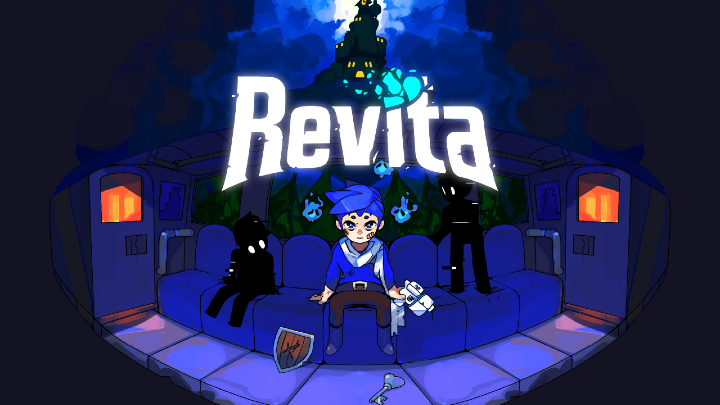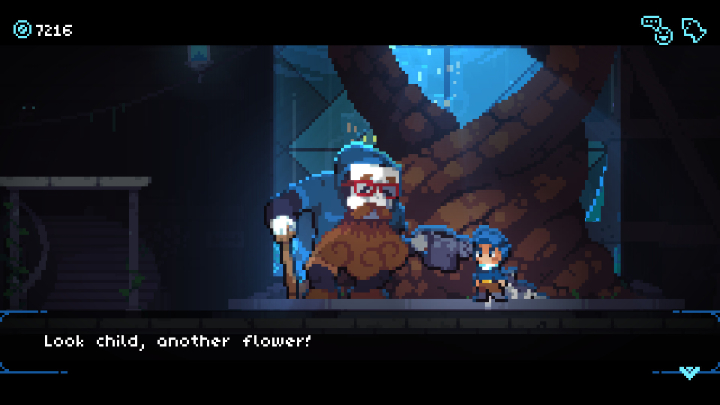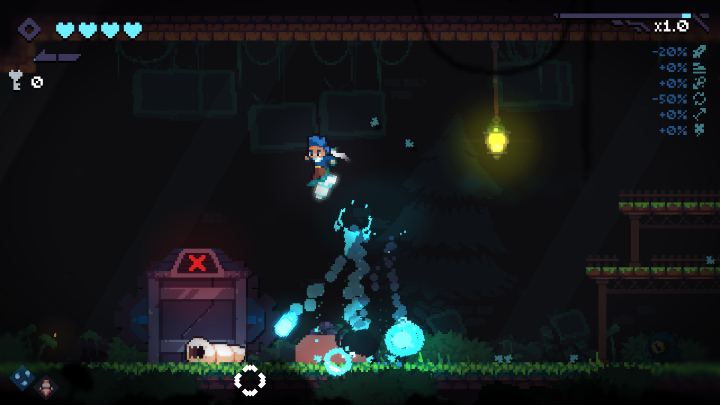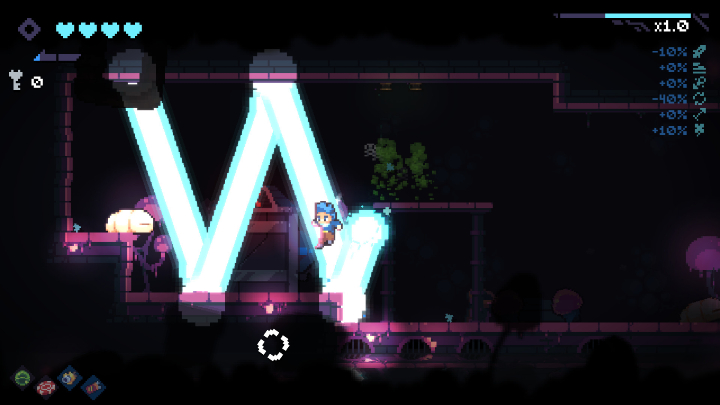
The roguelike genre has exploded to the point where it can be difficult to choose what to play. Sure, you could soldier up and play all of them, but let’s be honest: That’s not something everyone can realistically do. There are just! So! Many! Roguelikes! From Hades to Neon Abyss to OG offerings like The Binding of Isaac. Well, if you’re looking for something with a bit of a unique vibe that still hits all those die-and-try-again endorphins, Revita from developer BenStar definitely cements itself as a special offering in the genre.
Right when you take a gander at the game’s title screen, you know you’re in for something a little different. This is an action game first, yes, but it goes in a different direction from other roguelikes in terms of tone. The game’s title, Revita, for example, adorns the screen, the dot above the lowercase letter i replaced by a broken heart. (That broken heart above the letter i in Revita represents a couple things. The first is, obviously, the game’s emotional thematic undertones. The second, on the other hand, is related to one of the game’s biggest gameplay beats, which we’ll discuss in detail soon.)
It’s moody as heck, and I dare say even a little emo — in the absolute best way, of course.

You’ll play through the game’s tutorial, meet a mysterious and bizarre foe, and then be defeated. This cuts to our blue-haired hero sitting down in a train. His eyes are closed, and his head is low. Then, suddenly, a lone, pixelated tear forms under his eyelid. Moody. As. Heck.
Our hero arrives at the train station moments after, where he meets an older character. This person introduces himself as the Caretaker of Memoria Station, where you’ll return every time you meet a painful defeat during your travels. At the start of the game, he merely gives you a pass to ride the train as necessary. Later on, he’ll reveal bits of lore about the bosses. He’s a kind soul and you get the idea that he has a life full of secrets and sorrows.
The music that plays in the background while you explore Memoria Station is a morose piano composition. It’s a beautiful piece, but it’s as sad as it is lovely, and it further helps build the thoughtful yet somewhat depressing mood of Revita.
The Memoria Station is a quirky little hub area, and one that you’ll feel compelled to explore every so often. This is because the more you play, the more characters and features you’ll fill Memoria Station with. I won’t spoil much of that stuff here, because it’s cool to find new surprises for yourself, but you’ll be able to talk to all kinds of NPCs, decorate the station, and purchase useful items that you can encounter on your runs.

A charmingly gloomy tone and neat little hub area are both well and good, but they’d be worthless if Revita didn’t play well — and play well it most certainly does! Revita is a 2D twin-stick shooter (like the aforementioned Neon Abyss), so naturally you’ll be facing off against lots of enemies as you go from one level to the next.
There’s plenty of enemy variety in Revita, so you’ll see a nice roster of challenging, monster-like baddies as you go from room to room. Maybe you’ll see large, hopping blobs or mages. Or perhaps you’ll be attacked by gross, maggot-like creatures and floating aliens. There’s never a dull moment when it comes to the game’s combat, and there are even moments where it resembles a hectic bullet-hell shooter, with enemy projectiles flying every which way.
Bosses are interesting and highly challenging. You’ll face off against a handful of intense monstrosities, many of which are named after the stages of grief. You’ve got Denial, Bargaining, and Anger, to name a few. Oh, and quite fittingly, Depression is a real pain in the butt and one of the tougher bosses you’ll take on in Revita.
Mechanically, Revita functions extremely well as a twin-stick shooter, but it’s the game’s roguelite hooks that really take it to the next level. You’ll be able to unlock new guns — though admittedly, the starter gun packs quite a punch and is pretty reliable — as well as special upgrades that will then become more common in future runs.

Some of these upgrades, as well as health items and shields, sometimes pop up randomly after you’ve cleared a room. Other times, you’ll need to open locked chests or purchase these items from merchants in special rooms. Interestingly — and this is where the broken heart image above the letter i in Revita rears its symbolism yet again — the game utilizes your health bar, which consists of multiple heart icons, as its currency system. That’s right, you’ll have to spend chunks of health to upgrade your character during runs and even to open up locked chests.
Acquiring some upgrades will simply drain your health, much like an enemy attack would. Others are a bit more of a gamble, as they’ll actually remove entire hearts from your health bar, permanently decreasing your overall health. This means you won’t be able to take as many hits, but it might be worth it if an ability is badass enough.
Thankfully, all hope is not lost when you give of yourself to purchase upgrades in Revita. You also have a secondary meter below your health bar. This is your soul meter, and you fill it by picking up souls dropped by defeated enemies. There are other ways to find souls, such as destroying upgrade pickups you encounter that you might not need.
Your soul meter is broken up into fragments. If you fill up one fragment, you can then convert that fragment into health, adding yet another intriguing dynamic to Revita. If your health is drained, using one soul meter fragment will fill half a heart on your meter, which is equivalent to one enemy hit.

Alternatively, if your hearts are full, you can use your soul meter to increase your overall health, which comes in super handy if you’re constantly purchasing upgrades. Each soul meter fragment will add a quarter of a heart to your health bar. So while it will take four whole soul meter fragments just to increase your health by one heart, it’s worth it later in the game when things get especially tough.
All of the moving parts that make up Revita come together quite beautifully to create a wonderfully gloomy roguelite experience. The pixel art is used to create some neat, dark environments. The music is sad yet catchy. There’s brokenhearted symbolism everywhere. But beyond the game’s presentation, there’s also a roguelite twin-stick shooter here with enough addictive hooks to encourage you to see it all through to the end. This is a well-made game that hits some dope tonal beats, all the while delivering a wholesome gameplay experience.
Disclaimer: I was given a review code for Revita on Nintendo Switch, but the opinions expressed in this article are my own.